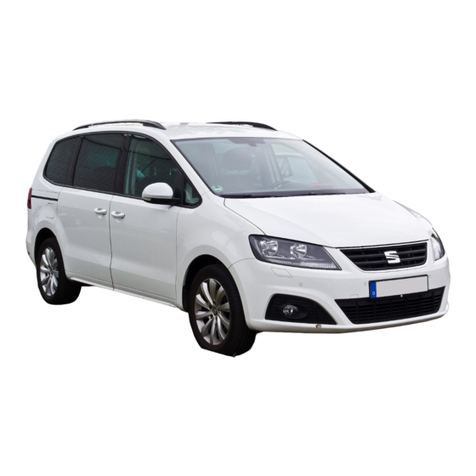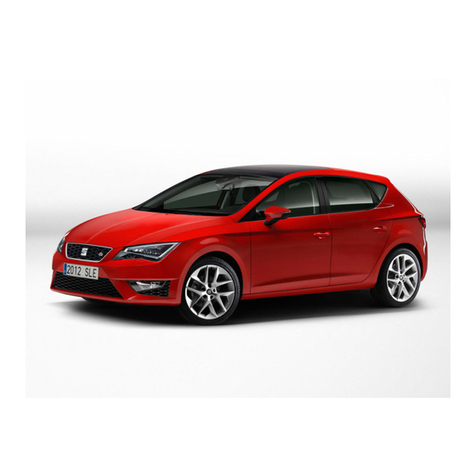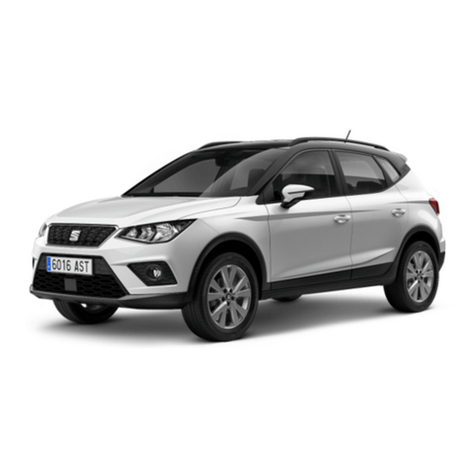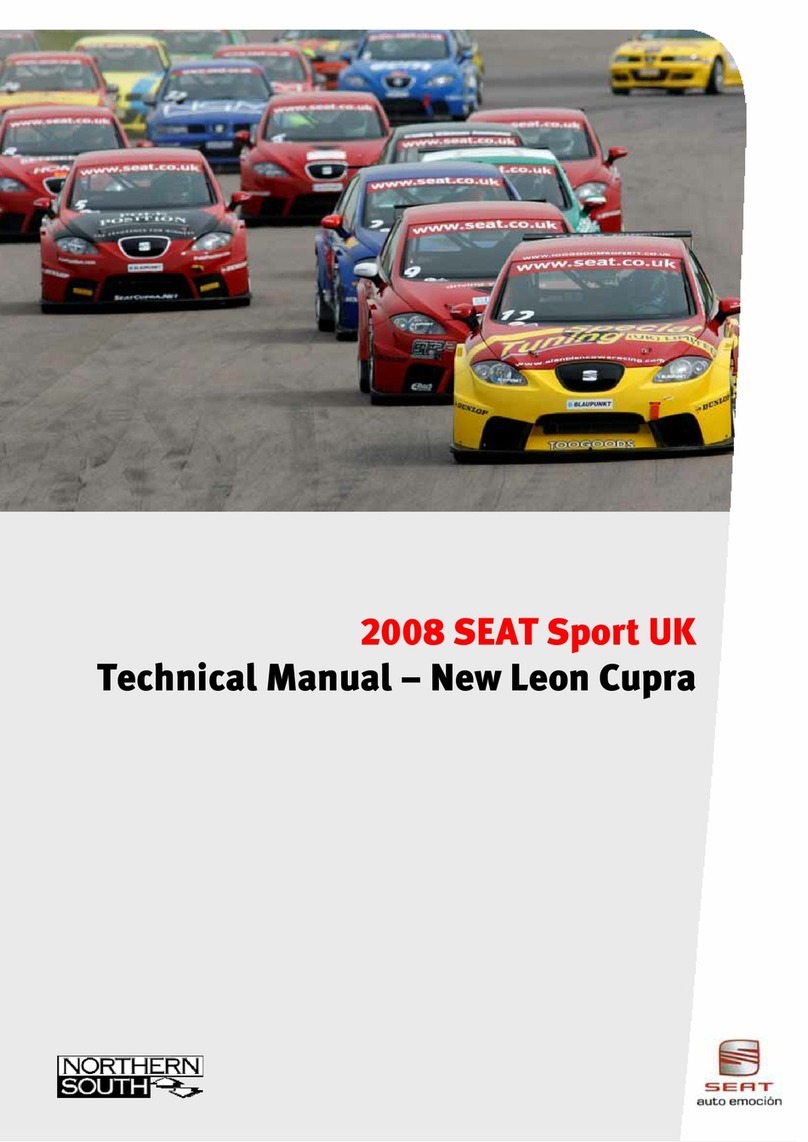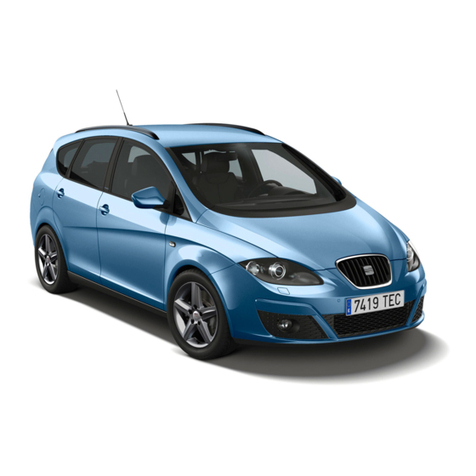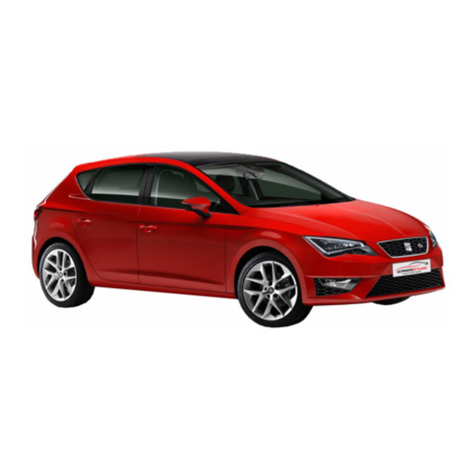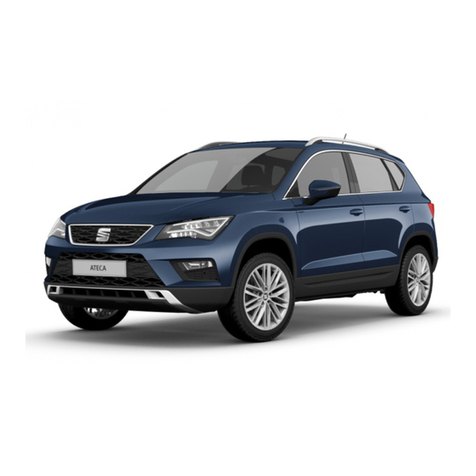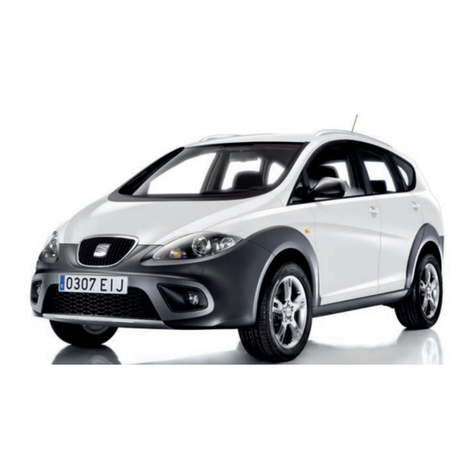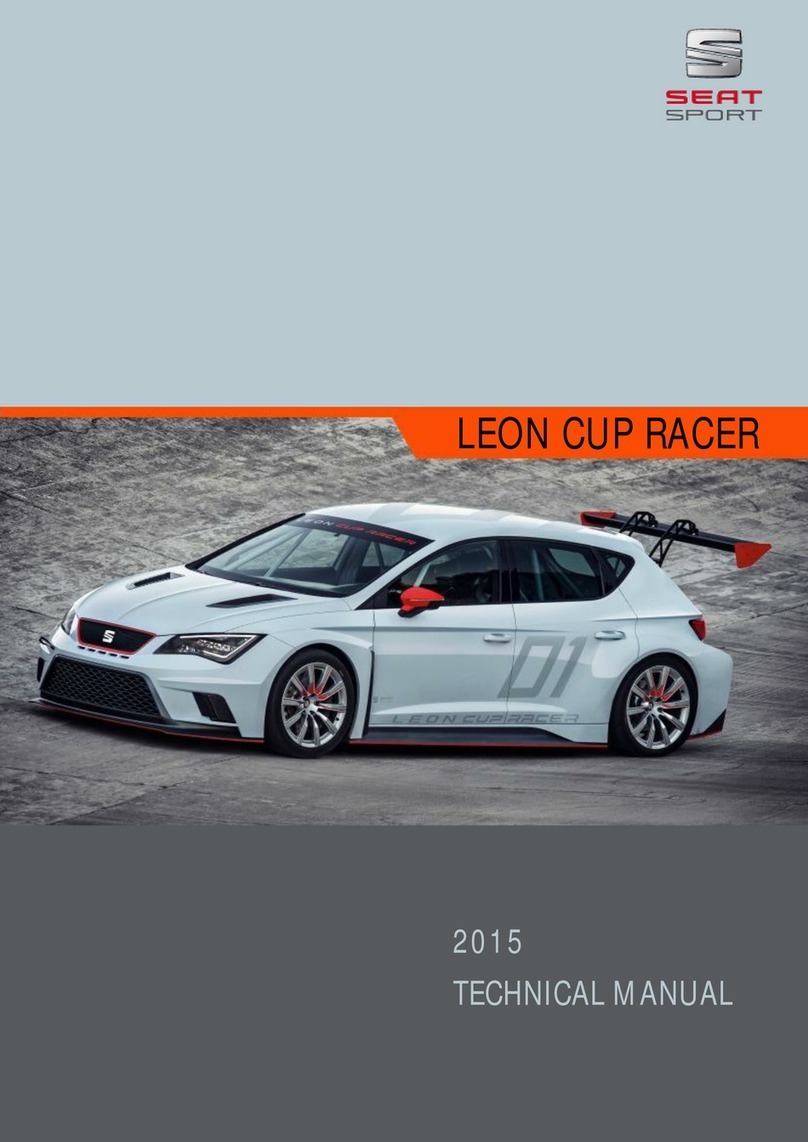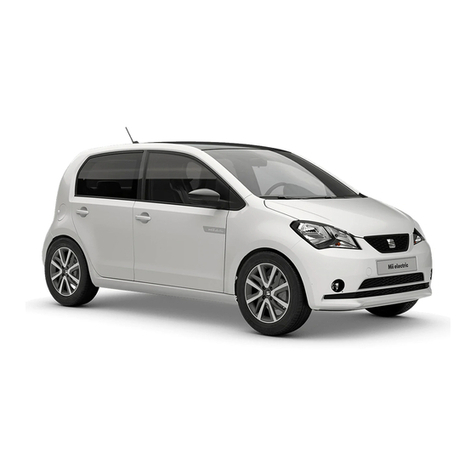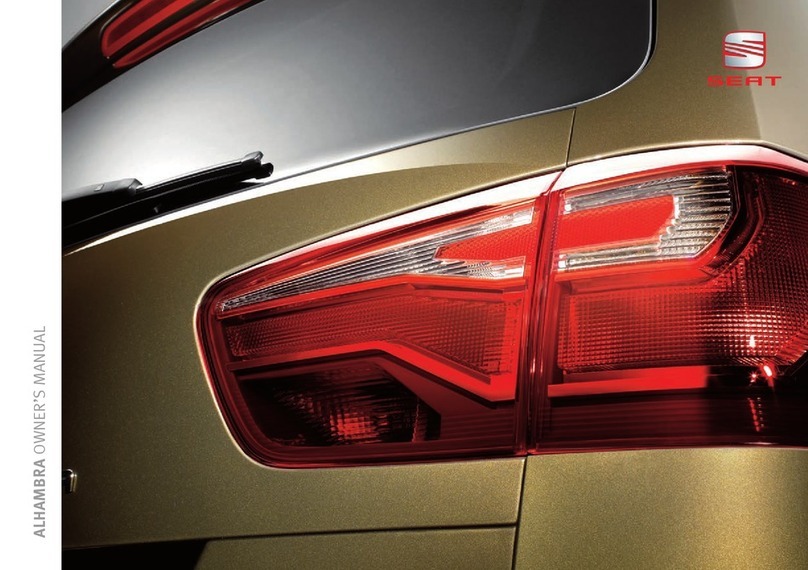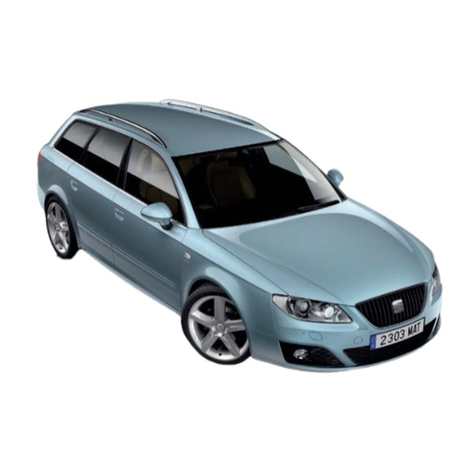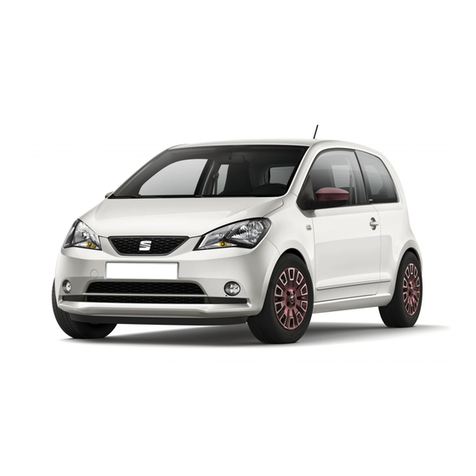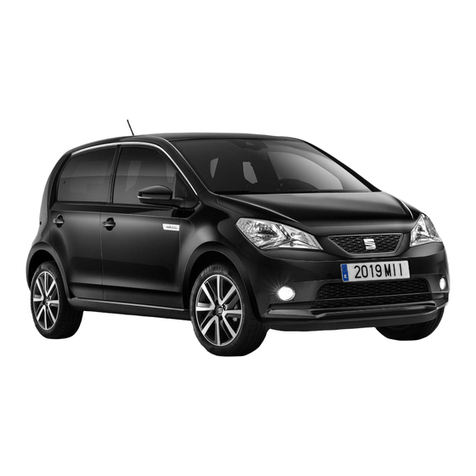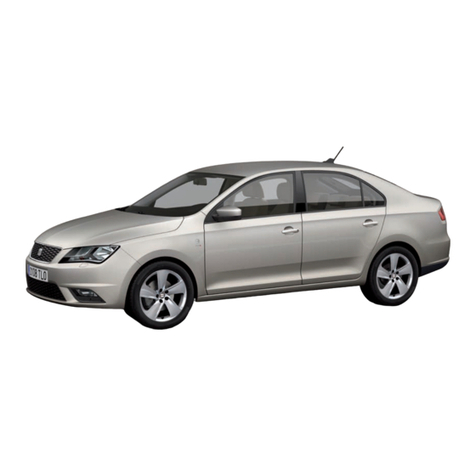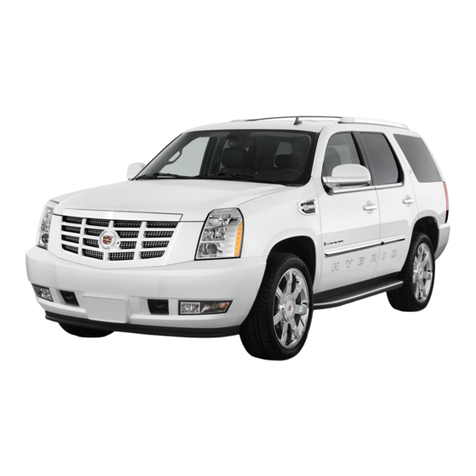Contents 3
Contents
The structure of this manual . . . . .
Content . . . . . . . . . . . . . . . . . . . . . . . . . . . . . . . .
Safety First . . . . . . . . . . . . . . . . . . . . . . . . . . .
Safe driving . . . . . . . . . . . . . . . . . . . . . . . . . . . . . .
Brief introduction . . . . . . .. . . . . . . .. . . . . . .. .
Proper sitting position for occupants . . . . . . .. .
Pedal area . . . . . . . . .. . . . . . . .. . . . . . . .. . . . .
Stowingluggage . . . . . . . . . .. . . . . . . . . .. . . . .
Seat belts . . . . . . . . . . . . . . . . . . . . . . . . . . . . . . . .
Introduction . . . . . . . . . . . . . . . . . . . . . . . . . . . . .
Why wear seat belts? . . . . . . . . .. . . . . . . .. . . . .
Seat belts . . . . . . . . . .. . . . . . . .. . . . . . . .. . . . .
Belt tensioning devices . . . . . . . . . . . . . . .. . . . .
Airbag system . . . . . . . . . . . . . . . . . . . . . . . . . . . .
Brief introduction . . . . . . .. . . . . . . .. . . . . . .. .
Front airbags . . . . . . . . . . . . . . . . . . . . . . . . . . . .
Side airbags . . . . . . . . . . . . . . . . . . . . . . . . . . . . .
Curtain airbags . . . . . . . . .. . . . . . . .. . . . . . .. .
Deactivating airbags* . . . .. . . . . . . . . .. . . . . . .
Child safety . . . . . . . . . . . . . . . . . . . . . . . . . . . . . .
Brief introduction . . . . . . .. . . . . . . .. . . . . . .. .
Child seats . . . . . . . . . . . . . . . . . . . . . . . . . . . . . .
Securing child seats . . . . . . . . . . .. . . . . . . . .. .
Handling instructions . . . . . . . . . . . . . .
Cockpit . . . . . . . . . . . . . . . . . . . . . . . . . . . . . . . . . . .
Overview . . . . . . . . . . . .. . . . . . .. . . . . . . .. . . .
Instruments . . . . . . . . . . . . . . . . . . . . . . . . . . . . .
Digital displayin the instrument panel .. . . . . .
Instrument panel menus . . . . . . . . . . . . . . .. . . .
Warning lamps . . . . . . . . . . . . . . . . . . . . . . . . . . .
Steering wheel controls . . . . . . . . . . . . . . . . . . .
Using these instructions . . . . . . . . . . . . . . . . .. .
Audio system . . . . . . . . . . . . . . . . . . . . . . . . . . . .
Radio navigation system . . . . . . . . . . . . . . . . . . .
Steering wheel lighting controls . . . . . . . . . . . .
Opening and closing . . . . . . . . . . . . . . . . . . . . . .
Central locking . . . . . . . . . . . . .. . . . . . . .. . . . . .
Keys . . . . . . . . . . . . . . . . . . . . . . . . . . . . . . . . . . .
Radio frequency remote control . . . . . . . . . . . . .
Anti-theft alarm system* . . . . . . . . . . . . . . .. . . .
Tailgate . . . . . . . . . . . . . . . . . . . . . . . . . . . . . . . . .
Windows . . . . . . . . . . . . . . . . . . . . . . . . . . . . . . .
Sliding/tilting roof* . . . . . . . . . . . . . . . . . . . . . . .
Lights and visibility . . . . . . . . . . . . . . . . . . . . . . .
Lights . . . . . . . . . . . . . . . . . . . . . . . . . . . . . . . . . .
Interior lights . . . . . . . . . . . . . . . . . . . . . . . . . . . .
Visibility . . . . . . . . . . . . . . . . . . . . . . . . . . . . . . . .
Windscreen wipers . . . . . . . . . . . . . . . . . . . . . . .
Mirrors . . . . . . . . . . . . . . . . . . . . . . . . . . . . . . . . .
Seats and stowage . . . . . . . . . . . . . . . . . . . . . . .
The importance of correct seat adjustment . . . .
Head restraints . . . . . . . . . . . . . . . . . . . . . . . . . .
Electric Front seats . . . . . . . . . . . . . . . . . . . . . . .
Rear seat bench . . . . . . . . . . . . . . . . . . . . . . . . . .
Stowage compartments . . . . . . . . . . . . . . . . . . .
Ashtrays*, cigarette lighter* and electrical
sockets . . . . . . . . . . . . . . . . . . . . . . . . . . . . . . . . .
First-aid kit, warning triangle, fire extinguisher
Luggage compartment . . . .. . . . . . . .. . . . . . . .
Air conditioning . . . . . . . . . . . . . . . . . . . . . . . . . .
Heating . . . . . . . . . . . . . . . . . . . . . . . . . . . . . . . . .
Climate control* . . . . . . . . . . . . . . . . . . . . . . . . . .
2C-Climatronic* . . . . . . . . . . . .. . . . . . . .. . . . . .
General notes . . . . . . . . . . . . . . . . . . . . . . . . . . .
Driving . . . . . . . . . . . . . . . . . . . . . . . . . . . . . . . . . . .
Steering . . . . . . . . . . . . . . . . . . . . . . . . . . . . . . . .
Safety . . . . . . . . . . . . . . . . . . . . . . . . . . . . . . . . . .
Ignition lock . . . . . . . . . . . . . . . . . . . . . . . . . . . . .
Starting and stopping the engine . . . . . . . . . . .
Manual gearbox . . . . . . . . . . . . . . . .. . . . . . . . ..
Automaticgearbox* . . . . . . . . . .. . . . . .. . . . . .
Handbrake . . . . . . . . . . . . . . . . . . . . . . . . . . . . . .
Acoustic parking aid system* . . . . . . .. . . . . . . .
Cruise control system (CCS)* . . . . . . . . . . . . . . .
Tips and Maintenance . . . . . . . . . . . . .
Intelligent technology . . . . . . . . . . . . . . . . . . . . .
Brakes . . . . . . . . . . . . . . . . . . . . . . . . . . . . . . . . .
Anti-lockbrakesystemandtractioncontrolM-ABS
(ABS and TCS) . . . . . . .. . . . . . . .. . . . . . . . .. . .
Electronic stabilisation program(ESP)* . . . . . . .
Driving and the environment . . . . . . . . . . . . . .
Running-in . . . . . . . . . . . . . . . . . . . . . . . . . . . . . .
Catalytic converter* . . . . . . . . . . . . . . . . . . . . . . .
Driving abroad . . . . . . . . . . .. . . . . . . .. . . . . . ..
5
6
7
7
7
10
16
16
19
19
21
24
28
30
30
34
37
41
44
46
46
48
50
55
55
55
56
59
65
71
83
83
83
87
90
91
91
97
98
100
102
104
106
109
109
115
116
117
121
124
124
125
127
128
129
131
134
134
137
137
139
142
146
147
147
148
149
150
153
154
158
159
161
165
165
165
166
167
169
169
170
171
s1cg.2.book Seite 3 Montag, 25. April 2005 3:54 15


